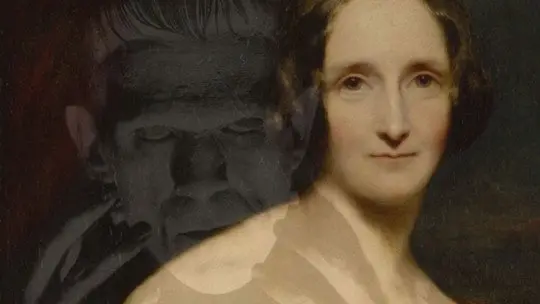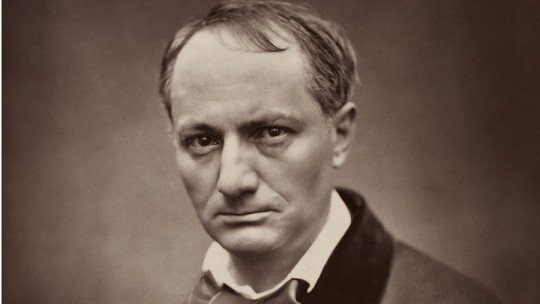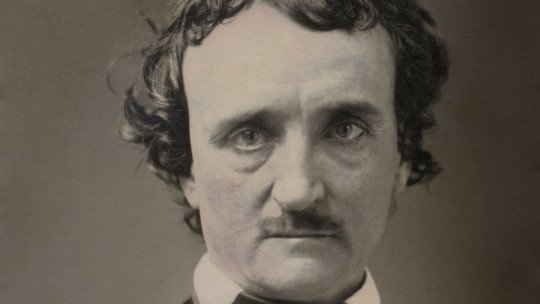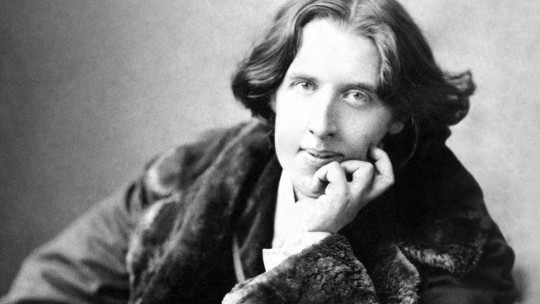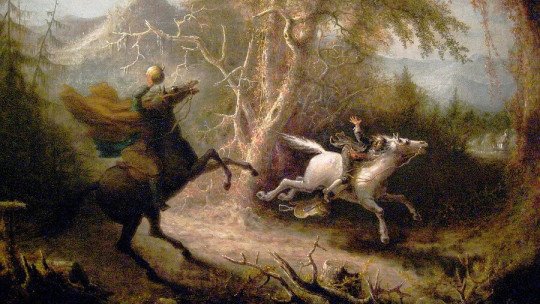
The so-called “Gothic” literature emerged at the dawn of Romanticism, at a time when the population rebelled against empiricism and the prevailing rationalism and leaned towards strange, gloomy stories with no apparent explanation. In this way, the power of the occult was recovered and the most primary instincts of the human being were appealed to: attraction, but also fear.
Many of these stories are world famous. You only have to cite authors such as Edgar Allan Poe (1809-1849), ETA Hoffman (1776-1822) or HP Lovecraft (1890-1937) to invoke a world of fascinating and disturbing fantasy. Today we bring you 10 of the most chilling Gothic stories for a Halloween night…or for any other.
10 classic terrifying short stories for your Halloween night
Although chilling stories about the dead and spectral apparitions have been invented in all times and cultures, it is true that Romanticism was the starting point of a specific literary genre, the so-called “Gothic genre.” The term referred, of course, to the reviled Middle Ages, which, at the end of the 18th century, It began to look like a magical, dark and fascinating world from which the nationality and folklore of the peoples were forged.
This is why many horror fantasies are set in a supposed Middle Ages or, as it is called today, in Neomedievalism. We are heirs of the seduction that this era exerted on the nineteenth-century; seduction that extended until the 20th century and that still endures.
Not all Gothic stories are set in an idealized Middle Ages, of course. In fact, the genre was here to stay and, during the Victorian era, the events of these terrifying stories were carried over to the contemporary times of their authors. Yes indeed, usually set in remote places, rustic villages or abandoned mansions.
Let’s look at some examples of classic horror stories. We hope you enjoy… or not.
1. The sandman (Der Sandmann), by ETA Hoffmann
Ernst Theodor Amadeus Hoffmann (better known literaryally as ETA Hoffmann) is one of the great pioneers of the gothic horror story. Born in 1776, when Pre-Romanticism was beginning to become all the rage in the German countries, as a young man he studied Law and worked in different jobs, until he opted for his great vocation, writing.
He sand manpublished in 1817, includes a well-known character from German folklore, Sandman or the “sandman”, usually used to scare children. In Hoffmann’s story, which appeared in the anthology night stories (a more than explicit title), the “monster” in question is Olimpia, an automaton with whom young Nathaniel falls madly in love. When Nathaniel learns that his beloved is not human, he falls into a pit of madness that will lead to his destruction.
2. The Legend of Sleepy Hollow (The Legend of Sleepy Hollow), by Washington Irving
This immortal story by another of literature’s great storytellers, Washington Irving, is especially known for Tim Burton’s adaptation of it in 1999 (without forgetting Disney’s magnificent 1949 version).
Set in the post-Revolutionary War United States, tells the legend of the call Headless Horsemana headless ghost who rides a spectral black horse and rises from his grave every All Souls’ Night in search of his lost head. The unfortunate man who runs into him is Ichabod Crane, the school teacher, precisely on the fateful night, after proposing to the beautiful (and rich) Katrina Van Tassel.
3. Ligeiaby Edgar Allan Poe
From the great master of Gothic horror we have chosen one of his least known works, but moving and absolutely terrifying: Ligeia. Published in 1838, the story revolves around the protagonist’s first wife, a beautiful and strange woman named Ligeia, with whom he is madly in love and who dies very young from an unknown illness.
The second part of the story tells us about the protagonist’s second marriage with a lady radically opposite to his beloved Ligeia: if the latter was dark, fascinating and exotic, the second is ethereal, blonde and angelic. The story immerses us in the husband’s thoughts, in his delusions and his madness, with Poe’s usual and absolute mastery.
4. The mountain of soulsby Gustavo Adolfo Bécquer
Bécquer is one of the greatest poets that Spanish literature has produced, but also one of the best writers of the Gothic genre in the Hispanic sphere. His late romanticism (he died in 1870) gives a special halo to this brilliant author, from whose Legends we choose his magnificent The mountain of soulspublished in 1861.
The story takes us to the past, to medieval Soria. Two cousins, Alonso and Beatriz, return from a hunt in what is known as Monte de las Ánimas, a place of frightening fame: They say that, on All Hallows’ Eve, the deceased buried there rise from their graves…
Beatriz is mocking at her cousin’s fear, and orders him to return to the mountain that same night (which is none other than the night damned) to recover a blue band that he has lost during the hunt. Alonso will go despite fear. Meanwhile, Beatriz will wait in her bedroom, surrounded by darkness and sounds…
5. The gray woman (The Gray Woman), by Elizabeth Gaskell
Elizabeth Gaskell is one of the great authors of English literature, who, like most of her fellow writers, published some gothic genre stories in a compilation titled, precisely, gothic tales (1861).
Of all the titles in the volume, we rescue The gray womanpossessing the most recognizable characteristics of the genre: gloomy setting in a mansion, an unhappy girl and a possessive and selfish husband. The story focuses on the escape of the wife, accompanied by her maid, and the persecution and harassment to which the tyrant subjects her. The title, The gray womanrefers to the woman’s hair that, after misfortunes (and despite her youth) turns gray as ash.
6. The Horla (Le Horla), by Guy de Maupassant
This famous Gothic tale by the excellent French writer was first published in 1886 and later revised and republished in 1887. It is a powerful testimony to how deep madness can run; The protagonist, who narrates the events in the first person, recounts the strange events that he notices around him since, one sunny spring day, he sees a boat passing by on the Seine River.
Indisputable precedent of the later stories of unknown entities that will make Lovecraft famous, The Horla by Maupassant is a dreamlike and surrealist statement that captures the reader from the first page. Its structure, in diary format, only adds concern and uncertainty to the story.
7. The monkey’s paw (The Monkey’s paw), by WW Jacobs
It is curious how William Wymark Jacobs (1863-1943) has gone down in the annals of literature for this disturbing story, when, in reality, he was a prominent humorist of the Victorian era. Published in 1902 as part of the story book The Lady of the Barge (The Lady of the Boat), is considered one of the best stories of the genre..
The plot revolves around a family (father, mother and son) who receives the arrival of a distant cousin returning from India. The man returns with a curious amulet: a dried monkey’s paw, which, according to him, grants three wishes. Although he warns them (before dying) that they must destroy it, the family, overwhelmed by debt, uses it to desire the amount of money they need… with the dire consequences that this entails.
8. The shadow in the corner (The Shadow in the Corner), by Mary Elizabeth Braddon
Another of the great ladies of Victorian Gothic fiction, Mary Elizabeth Braddon (1837-1915), has left us a notable set of Gothic tales, such as The shadow in the cornerfirst published in 1879.
In a similar way to The Horla by Maupassant, this Gothic tale, Braddon’s most popular, narrates the strange presence of a mysterious entity that terrorizes the house of a rich landowner. In this case, however, the “creature” breaks into the lives of all the inhabitants of the place. Apparently, everything is due to a suicide that someone committed in the attic rooms…
9. The resurrectedby Emilia Pardo Bazán
Emilia Pardo Bazán (1851-1921) is one of the most important writers of Spanish literature. Famous for her role as an author of realistic novels, Bazán also successfully cultivated the Gothic story, of which she is one of the most important representatives in the Hispanic field..
In The resurrected (1908), and in a similar way to what Poe did in his The premature burialBazán narrates the misfortune of a woman who has been buried alive (something, unfortunately, quite common in the 19th century). This is one of the best horror stories by the Spanish writer.
10. the grave (The Tomb), by HP Lovecraft
And we close this small anthology of gothic horror stories with one of the great masters of the genre: Howard Philips Lovecraft (1890-1937), the author who has inspired the great horror and science fiction geniuses of the 20th century.
Despite his short life, Lovecraft managed to give the world an intense production, the fruit of his imagination and his own delusions. In Lovecraftian literature, Horror, fantasy and science fiction merge to result in nightmarish worlds that shake the reader to the depths of their soul.. the gravepublished in 1922, tells of the fascination that a young man feels for the Hyde mausoleum. His attempts to penetrate space are useless: something is stopping him, and he doesn’t know what it is…

Dr. Arodi Martinez
Dr. Arodi Martinez

Gabriela Sotomayor
Gabriela Sotomayor

Maria Sol Stagnitto
Maria Sol Stagnitto

Diego Rojo & Team
Diego Rojo & Team

